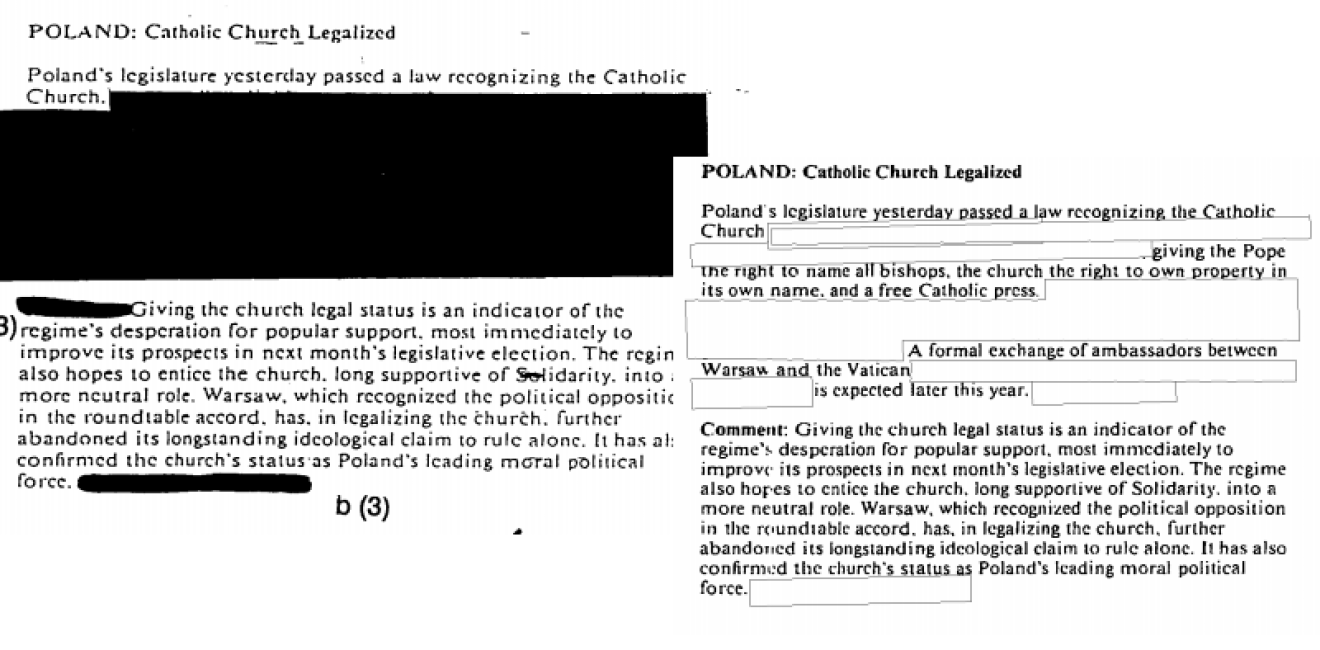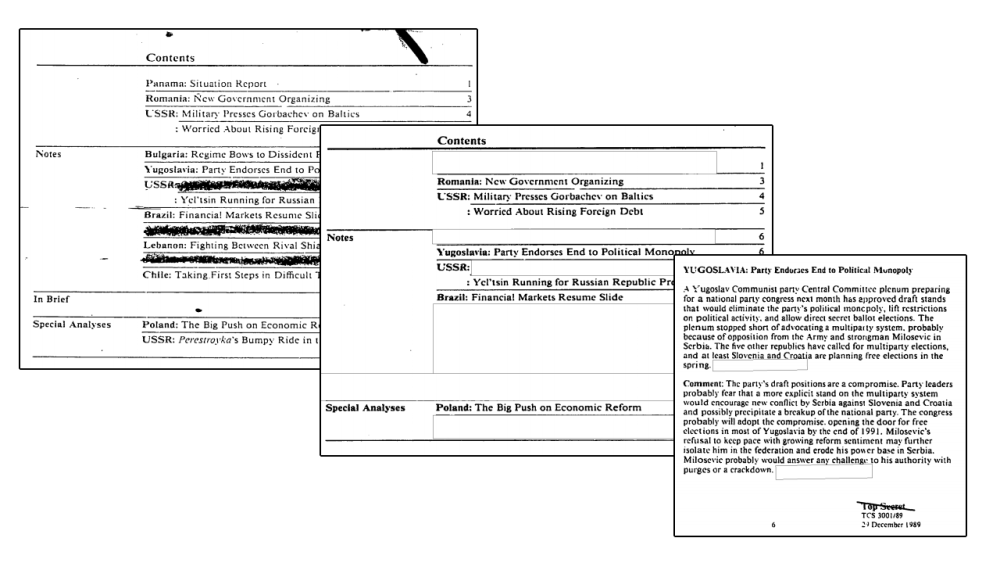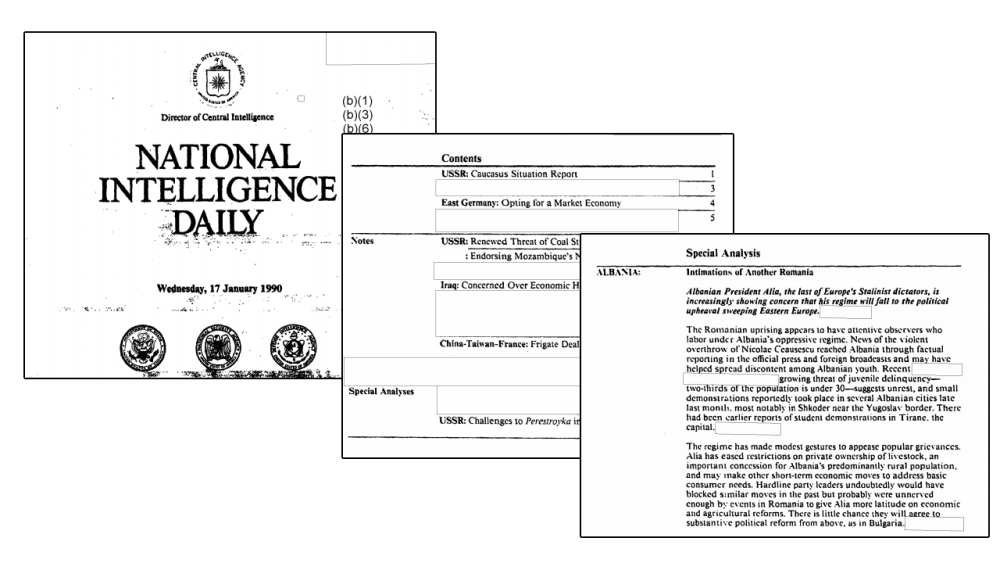What’s Actually New in the Newly Declassified CIA Records?
The CIA recently published excerpts from over 100 National Intelligence Dailys about Eastern Europe. Is there anything new in them?

A blog of the History and Public Policy Program
The CIA recently published excerpts from over 100 National Intelligence Dailys about Eastern Europe. Is there anything new in them?

Last December, the CIA released excerpts from over 100 National Intelligence Dailys – colloquially known as NIDs – that focused on developments in Eastern Europe and the Soviet Union in 1989 and 1990.
We in the History and Public Policy Program at the Wilson Center thought this was an exciting development, so much so that we co-organized a panel discussion with the CIA’s Office of Public Affairs to mark the release of the documents.
However, Mark Kramer – one of our panelists, the director of Cold War studies at Harvard, a leading Cold War scholar, and all-around archives aficionado – suggested that the files might be not new after all. Kramer pointed us to the existence of (and generously shared copies of) over 100 NIDs from the late 1980s and early 1990s that were already published on the CIA’s FOIA Electronic Reading Room. (Kramer, it should be noted, had very positive things to say about much of the analysis featured in the NIDs.)
We closely reviewed the files from the 1990s and 2000s and compared them to the documents published in December 2019.
First, the bad news: we found that over 20 of the NID excerpts about Eastern Europe in the most recent CIA project had been previously released, some as early as 1999 and others in 2011 and 2013.

It is possible that the CIA staff responsible for selecting the NID excerpts last year decided to “double dip” and hoped no one would notice. It is also entirely possible that they were unaware of the earlier releases. After all, the CIA does less systematic declassification these days, and usually only declassifies information on ad hoc basis in response to FOIA requests. This leads to the phenomena of the same files being reviewed and released, over and over again. Look no further than the “Dubious Secrets” series at the National Security Archive for countless examples of FOIA officers releasing the same document multiple times, often with very different levels of redaction.
Now, the good news: the 2019 NIDs do contain a fair amount of brand new material.
In fact, over 55 of the excerpts are entirely new. They had not yet been declassified or published in any shape or form by the CIA.

The 2019 tranche also includes five excerpts that were withheld during previous declassifications. These include entries on:
All of the NIDs, old and new alike, have been uploaded to our Digital Archive collection “CIA Reports on the Collapse of Communism in Europe,” which now contains 221 documents. We have noted when a document published in 2019 overlaps with an earlier release(s), in either the “Document Summary” or the “Related Documents” section on each document page.
On the whole, then, the CIA deserves credit for its December 2019 release of documents about Eastern Europe and the Soviet Union.
Yet this positive bit of news does not really change the broader assessment of the US government’s declassification program for historical documents. William Burr’s must-read article for Foreign Affairs shows that government transparency – including the CIA’s declassification program – is in a freefall. The CIA’s Historical Review Panel, an expert committee of historians and political scientists that advises the agency, seems to have been sidelined. The State Department’s Advisory Committee on Historical Diplomatic Documentation regularly reports on problems with the CIA’s involvement with the production of the Foreign Relations of the United States series.
Put simply: it will take a lot more than excerpts from a few dozen National Intelligence Dailys for the CIA to inspire confidence among historians in its commitment to historical transparency.


A leader in making key foreign policy records accessible and fostering informed scholarship, analysis, and discussion on international affairs, past and present. Read more


The Cold War International History Project supports the full and prompt release of historical materials by governments on all sides of the Cold War. Read more



